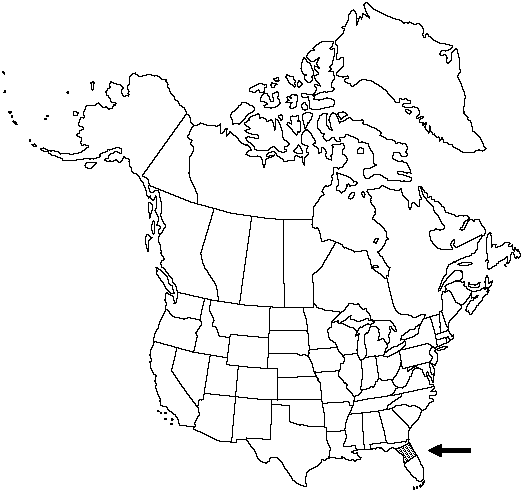Asplenium pumilum
Prodr. 129. 1788.
Roots proliferous. Stems erect, unbranched; scales black with pale margins, linear, extremely narrow, 2–3 mm, only several cells wide. Leaves monomorphic. Petiole green in small leaves, black abaxially and green adaxially in large leaves, (1–) 2–7 (–16) cm, 1–2 times length of blade; indument of fine, nonglandular hairs on veins. Blade deltate, simple to 2-pinnate, 1–8 (–12) × 1–6 (–8) cm, thin, papery with scattered hairs on both surfaces; base truncate; margins crenate-dentate; apex pointed, not rooting. Rachis green, dull, glabrous. Pinnae in 0–5 pairs, ovate to deltate, simple to lobed to pinnate proximally, 1–6 × 1–3.5 cm, proximal pinna pair largest; base broadly cuneate to truncate; margins irregularly crenate; apex rounded to pointed. Veins free, evident. Sori 1–15 (–35) per pinna, on both basiscopic and acroscopic sides. Spores 64 per sporangium. 2n = 72.
Habitat: Shaded limestone boulders
Elevation: 0–50 m
Distribution

Fla., Mexico, West Indies, Central America, South America
Discussion
Asplenium pumilum is a widespread tropical American fern known only from a few spots in north central Florida. It is a very distinct species, readily recognized by its hairy blades and deltate leaves. Fertile forms vary from simple and only 2 cm to 2-pinnate and 28 cm, and all stages between the two extremes exist. Extreme forms are different enough to suggest that two species might be present.
Selected References
None.
Lower Taxa
No values specified."fine" is not a number."-2timeslengthofblade" is not declared as a valid unit of measurement for this property.